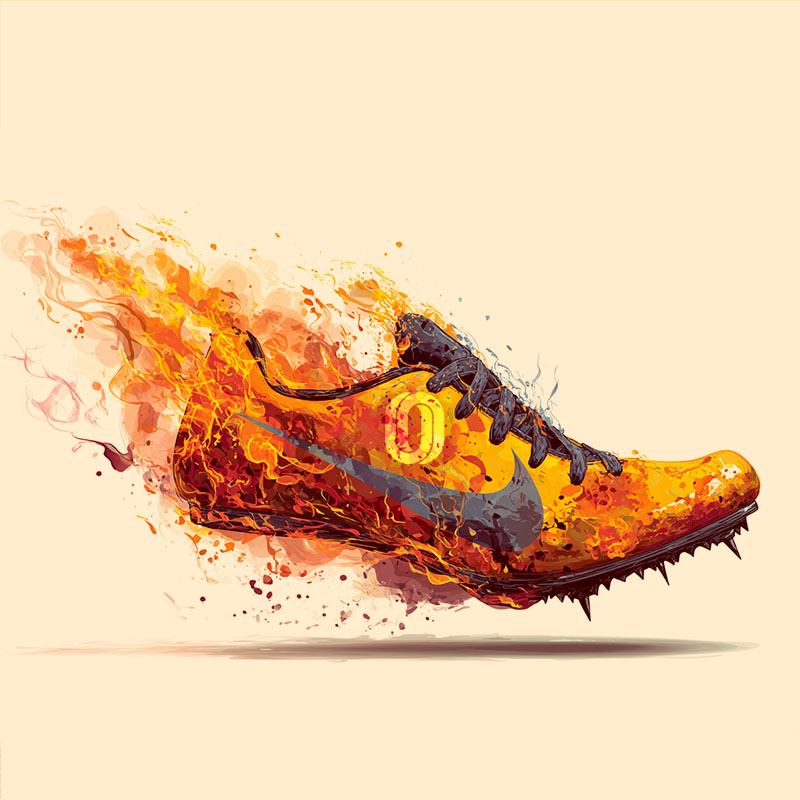Summer training reveals two kinds of athletes: those who survive it, and those who use it to separate. It’s where the season defining work actually gets done. Every elite athlete has that story about grinding through doubles in the heat while their friends were at the pool.
While everyone else is making excuses about the heat, you could be using science to turn the summer months into your unfair advantage. Here's what the research actually says about beating the heat, counting down to the one discovery that changes the entire game.
We're starting here because this one's non-negotiable. Drop just 2% of your body weight in sweat and your power tanks by 3%, your endurance by up to 10%. For a 165lb athlete, that's only 3.3 pounds of fluid - easily lost in just 45 minutes of hard summer training.
That's the difference between hitting your splits and dying a slow death in the homestretch.
And it’s not just about chugging water: you have to replace the crucial sodium lost in sweat (you don't need a fancy electrolyte blend). If you're sweating heavily or training longer than 2 hours, the fix is simple: add a quarter teaspoon of salt and a little lemon juice for taste to your water bottle. That's it.
Fighting the summer heat with a dawn patrol workout? A for effort, but your body doesn't care about good intentions.
Thanks to your natural circadian rhythm, you are literally built to perform best between 4:00 PM and 6:00 PM when your core temperature and nerve conduction velocity are at their absolute peak. Yes, it's often hotter then. And yes, you will also produce more power.
Temperature plays a bigger role in your performance than you might think.
Here's proof: By analyzing tens of thousands of top marks from major championships, researchers found 70-75°F is the sweet spot for peak performance. Above or below that? The numbers drop.
So, what wins the tug-of-war between this perfect temperature and your body's natural 4-6 PM performance peak?
The data gives us a simple, actionable rule for summer: when the afternoon temperature soars past 80°F (27°C), the heat penalty officially outweighs your circadian advantage. On those days, shift your session to the mid-morning (around 9-11 AM) to get the best balance of physiological readiness and reasonable temperatures.
If you find yourself cursing the heat, good news: you're already performance hacking. Studies show swearing legitimately boosts pain tolerance and power output by 2-4%. Athletes repeat their chosen word every 5 seconds during hard efforts, or swear for 10-15 seconds before starting. Works best if you usually keep it clean, so save those choice words for when the sun is really testing you.
A quick pro-tip: That 4% power boost won't mean much if you get kicked out of practice or a meet. Be smart with this one.
Forget those ridiculous cooling vests. The most powerful heat hack is stupidly simple:
cool your palms.
Stanford researchers discovered your palms contain specialized blood vessels that act like radiators for your body. The results from their studies on muscular endurance are staggering: in just three weeks, athletes using palm cooling between sets increased their total bench press work volume by
40%. In another study, experienced athletes increased their total pull-up volume by an incredible
144% over just six weeks
[1].
Here's the key: the temperature must be "just right." Too cold (like ice) makes your blood vessels constrict, killing the effect. The sweet spot used in the lab was
59-60°F (15-16°C) think cool tap water, not ice water. While the researchers used a specialized device for these studies, you can apply the same principle at the track or gym.
The simple method?Hold a chilled bottle or a cool, damp towel with both palms for 60 seconds between sets. While everyone else is melting, you're recovering faster and maintaining quality reps like it's a cool day in October.
Reality check: This helps manage heat, not defeat it. When temps hit dangerous levels or you feel dizzy, nauseous, or stop sweating, that's heat exhaustion territory. No amount of palm cooling fixes that. Train smart, hydrate properly, and know when to call it.
